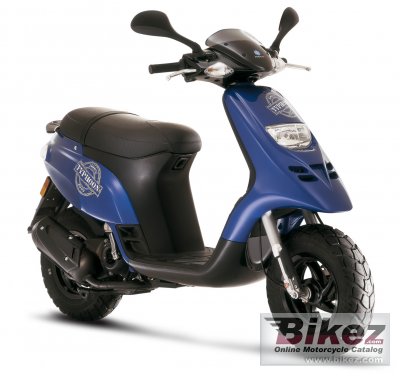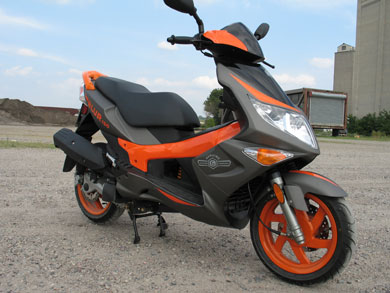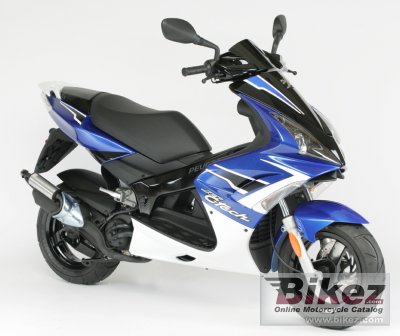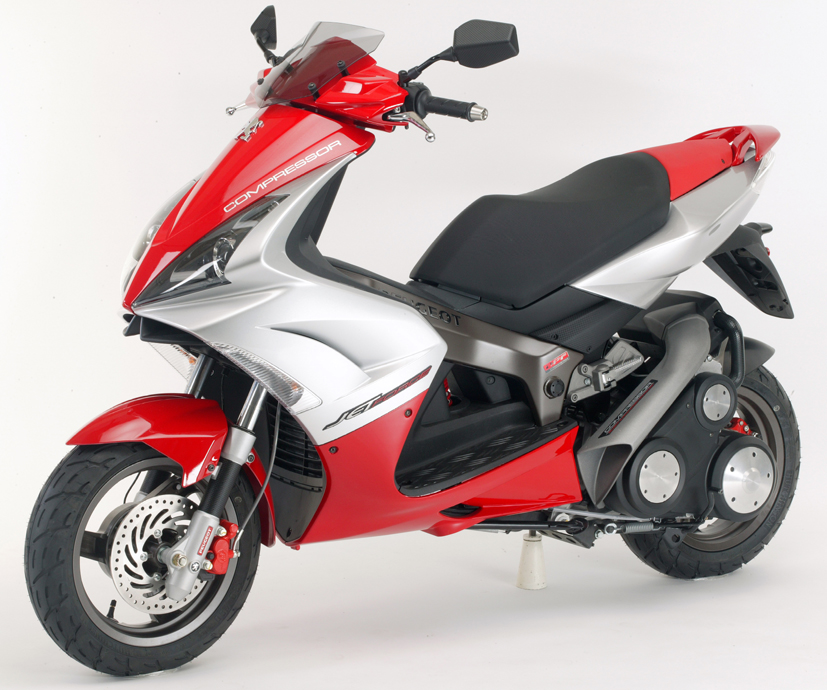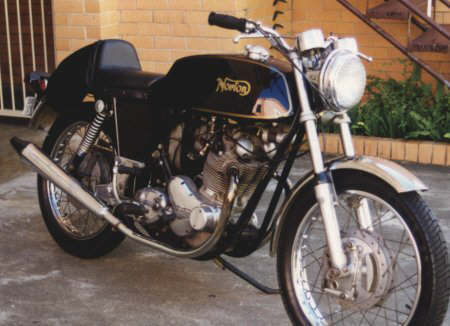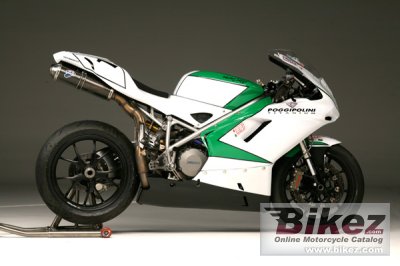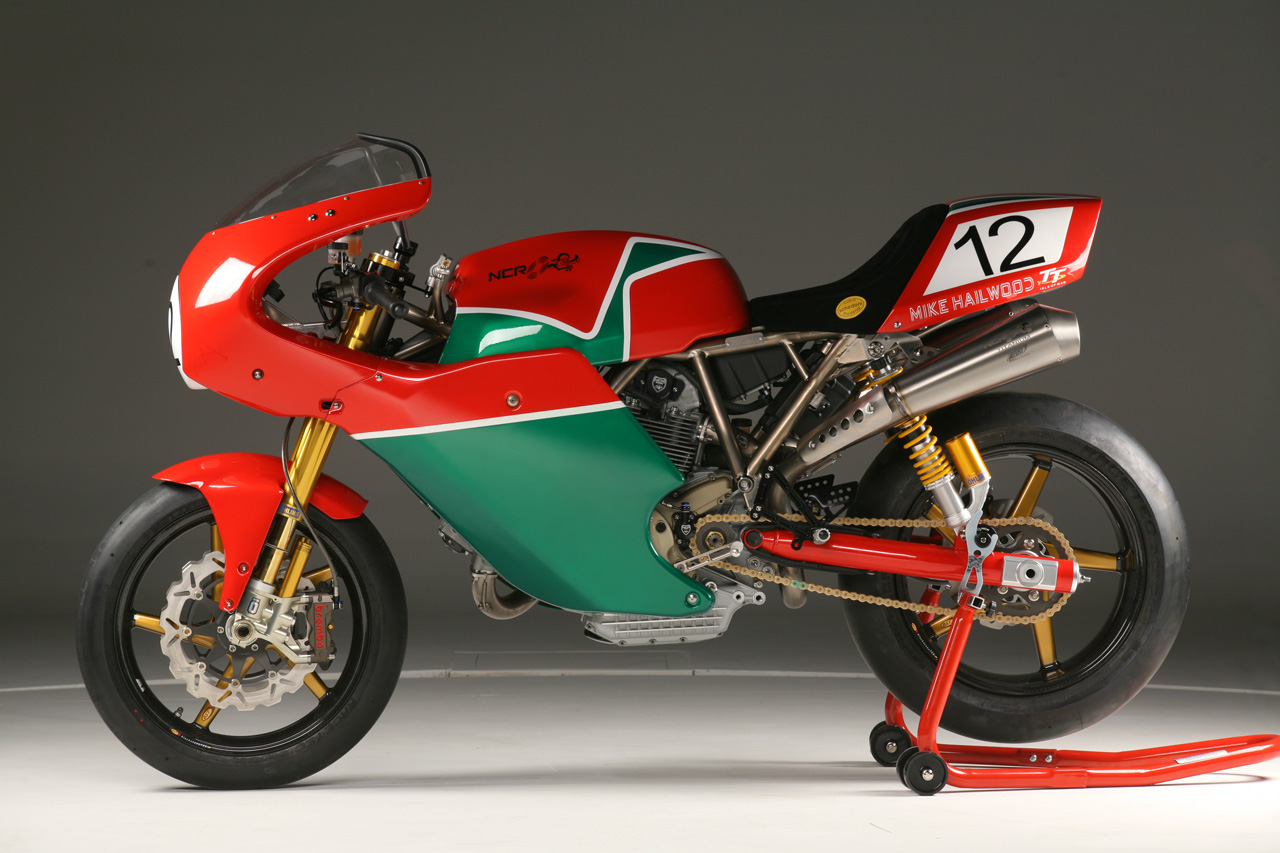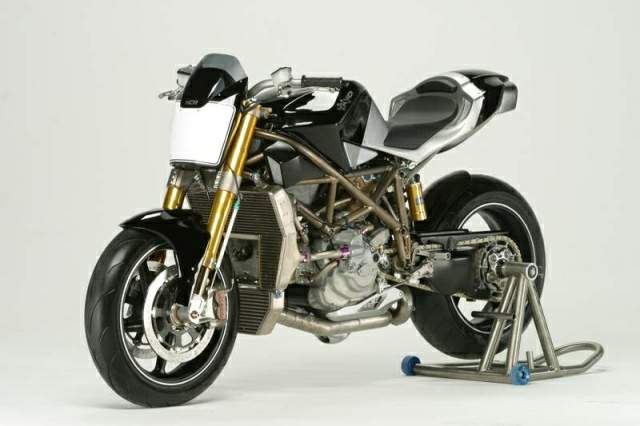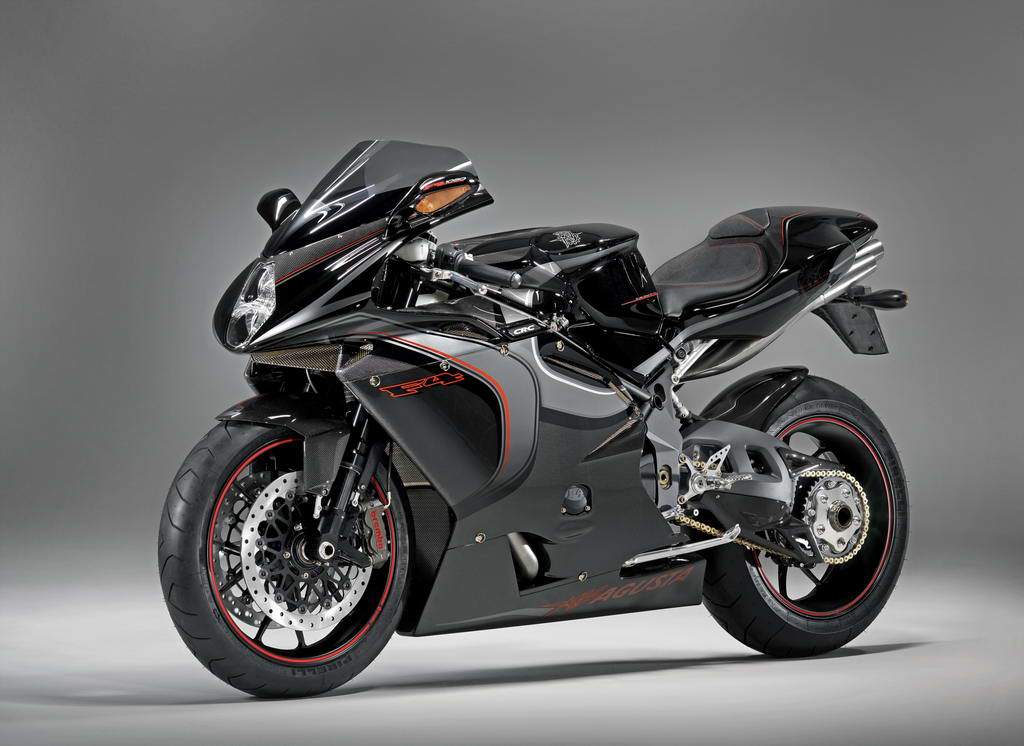 The Ninja ZX-6R’s lean physique is fundamental to its light handling, with every component on the bike carefully scrutinized for minimal weight. The intake resonator box and supports for the instrument panel and mirrors are unitized with the enlarged -to optimize intake volume – Ram Air duct, contributing to weight savings and improving rigidity. Camshafts are made of lightweight chrome-moly steel, and light, magnesium engine covers all add up to big weight savings, along with transmission, oil pump and starter gears carefully engineered for maximum strength and minimal weight.In addition to its more than healthy bottom-end torque and smooth throttle response, the engine’s mid-range performance benefits from a similar number of refinements, including double-bore velocity stacks with inlets at two different heights, special-profile pistons with low piston-ring tension for reduced friction, and advanced cam chain guides for excellent cam-chain stabilization.
The Ninja ZX-6R’s lean physique is fundamental to its light handling, with every component on the bike carefully scrutinized for minimal weight. The intake resonator box and supports for the instrument panel and mirrors are unitized with the enlarged -to optimize intake volume – Ram Air duct, contributing to weight savings and improving rigidity. Camshafts are made of lightweight chrome-moly steel, and light, magnesium engine covers all add up to big weight savings, along with transmission, oil pump and starter gears carefully engineered for maximum strength and minimal weight.In addition to its more than healthy bottom-end torque and smooth throttle response, the engine’s mid-range performance benefits from a similar number of refinements, including double-bore velocity stacks with inlets at two different heights, special-profile pistons with low piston-ring tension for reduced friction, and advanced cam chain guides for excellent cam-chain stabilization.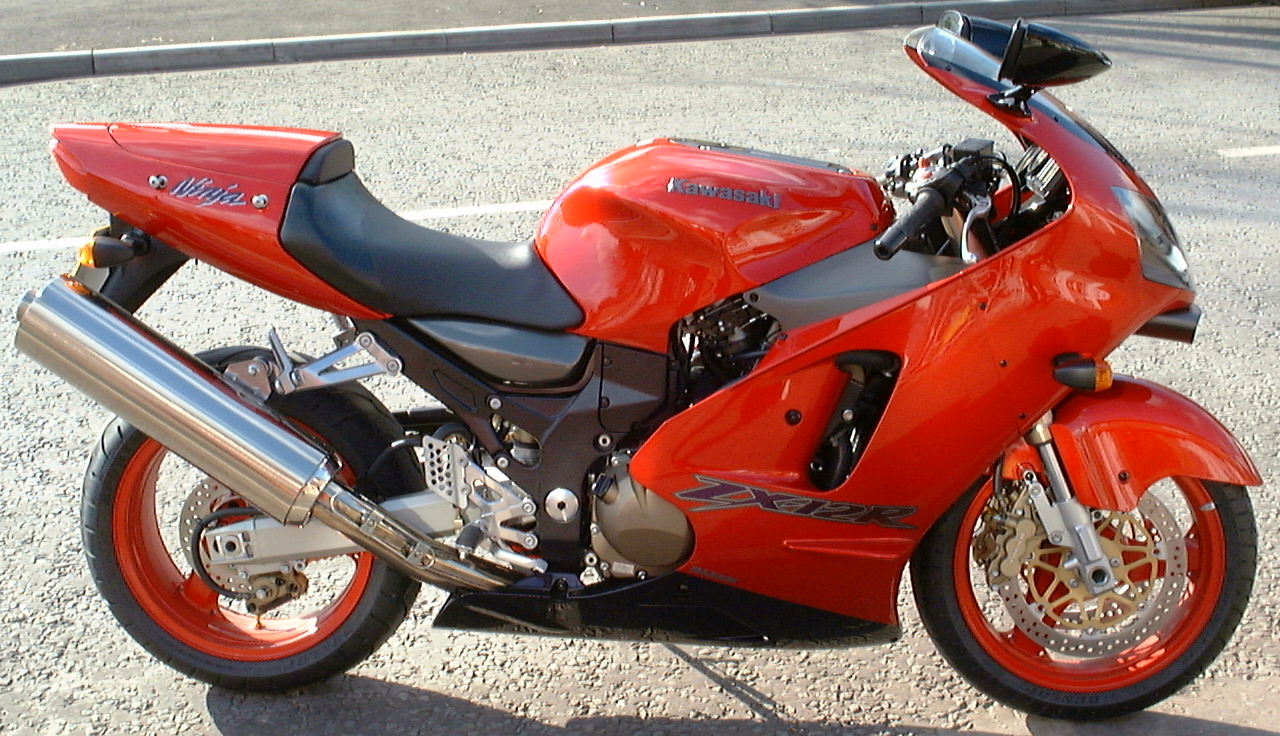 That strong mid-range provides great drive out of corners and is harmonized with the engine’s silky smooth high-rpm performance. This linear throttle torque delivery results in unparalleled controllability and offers the rider precise throttle control at all rpm. This predictability pays dividends when making mid-corner power adjustments. When combined with the reduced need to downshift provided by its healthy mid-range performance, the predictable throttle response makes it easier for riders to maintain their rhythm when stringing corners together.After having to handle some technical issues with the intake valve springs that has delayed the public launch of the machine, the British division of Kawasaki announced its very much anticipated 2011 Ninja ZX-10R model is scheduled for introduction this month.
That strong mid-range provides great drive out of corners and is harmonized with the engine’s silky smooth high-rpm performance. This linear throttle torque delivery results in unparalleled controllability and offers the rider precise throttle control at all rpm. This predictability pays dividends when making mid-corner power adjustments. When combined with the reduced need to downshift provided by its healthy mid-range performance, the predictable throttle response makes it easier for riders to maintain their rhythm when stringing corners together.After having to handle some technical issues with the intake valve springs that has delayed the public launch of the machine, the British division of Kawasaki announced its very much anticipated 2011 Ninja ZX-10R model is scheduled for introduction this month.On the limited number of machines produced so far, the camshaft, valve springs and spring retainers for intake valves are being replaced to prevent the valve spring from surging. The same design update is automatically being incorporated into the ongoing production run of the model in question.
 While we have been thinking about Christmas and the New Year at this festive time, a team of engineers in Japan have been exhaustively testing new high performance components for the stunning new Ninja ZX-10R. With the dealer launch of this and other incoming range models on 27 January across the UK, this news is the best possible start to 2011 for Kawasaki dealers and riders,” stated Sales and Marketing Manager for Kawasaki Motors UK, Michael Johnstone.
While we have been thinking about Christmas and the New Year at this festive time, a team of engineers in Japan have been exhaustively testing new high performance components for the stunning new Ninja ZX-10R. With the dealer launch of this and other incoming range models on 27 January across the UK, this news is the best possible start to 2011 for Kawasaki dealers and riders,” stated Sales and Marketing Manager for Kawasaki Motors UK, Michael Johnstone.The 2011 Ninja ZX-10R comes in either black or green, with the new KIRB system which is Kawasaki’s Intelligent anti-lock Brake System plus the new S-KTRC which minimizes wheel slip on slick or broken surfaces.If compared to the previous generation, Kawasaki’s latest flagship superbike the ZX-10R is lighter, as it weights 436 lbs (197 kg), and packs more power. Specifically, the 998cc, 16-valve, DOHC, liquid-cooled inline-four engine fitted on the Ninja superbike develops 197 horsepower (or 207 horsepower with ram air in full effect).
The 2011 Kawasaki Ninja ZX-10R will retail at GBP11,699 ($18,600) and GBP12,699 ($20,200) for the ABS equipped model. An additional sports package includes traction control and DTC, costing an extra GBP1,360 ($2,176).
 Japanese manufacturers didn’t quite focused on producing 250cc sportbikes these last years, Kawasaki remaining the only bike builder with such a motorcycle on sale today for the U.S. market. The smart choice was to keep producing and yet improving this icon, and this way it managed to dominate the American market at the given category. By using a perfect combination of rider-friendly engine, easy to operate chassis, and modern design, this Ninja is a true companion on your road towards bigger motorcycles, like the ZX-6R and ZX-10R.
Japanese manufacturers didn’t quite focused on producing 250cc sportbikes these last years, Kawasaki remaining the only bike builder with such a motorcycle on sale today for the U.S. market. The smart choice was to keep producing and yet improving this icon, and this way it managed to dominate the American market at the given category. By using a perfect combination of rider-friendly engine, easy to operate chassis, and modern design, this Ninja is a true companion on your road towards bigger motorcycles, like the ZX-6R and ZX-10R.Riders who are willing to be initiated in the wonderful world of motorcycling and prefer a sportier ride are most likely to jump on the Kawasaki Ninja 250R so it is best to know what to expect. I certainly did. I found myself facing an engine that thrives on high-rpm excitement. Riders will definitely appreciate the 249cc parallel twin which has been retuned in order to spice up its smooth and predictable power delivery and the results are simply awesome. I now enjoyed more low- and mid-range rpm torque thanks to revisions to its dual overhead camshafts and a new two-into-one exhaust system. This last unit doesn’t make more sound than necessary; let’s say it has enough to do by delivering awesome performance just above idle.
What this ride now needed was the silky smooth six-speed transmission which complements all the awesome features of the engine, toping off the sportbike equipment list. What is so great about this gearbox is that it enables the 250R to exploit a powerband that’s sure to please riders with its beginner friendly low-end grunt and a lively top-end rush that’ll keep seasoned veterans satisfied.
That gutsy engine in communion with a great transmission unit, not only makes it one sweet machine to be on, but it actually delivers excellent fuel economy which is excellent for the novice rider which with more than one occasion can forget to gas it up.
Being a sportbike, it can somehow be considered as being uncomfortable, but a natural riding position and comfortable ergonomics combined with its lightweight handling, easy controllability and improved throttle response make the 250R a pleasure to ride on city streets
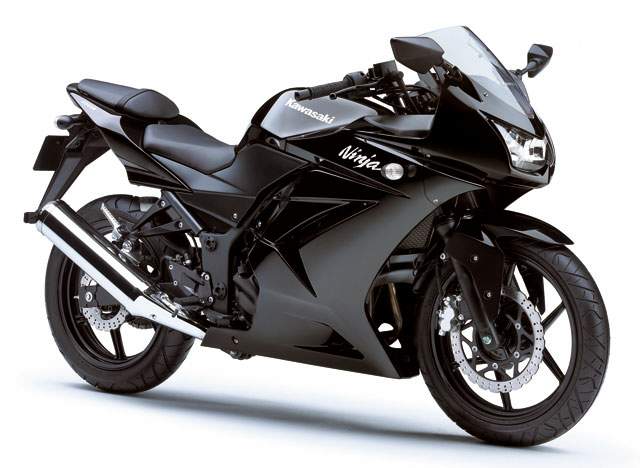 Also new for 2008 are the larger 17-inch wheels that, apart from offering a big-bike look, also contribute at offering great handling and improved stability.
Also new for 2008 are the larger 17-inch wheels that, apart from offering a big-bike look, also contribute at offering great handling and improved stability.I appreciate the suspensions because they are very appropriate for this ride and manage to keep it steady in corners while still keeping things smooth and relatively simple.
A larger 290mm front brake rotor is gripped by a powerful 2-piston caliper to provide a healthy dose of stopping power with a responsive feel at the lever. Like Kawasaki’s other sport models, the Ninja 250R is fitted with petal discs for efficient heat dissipation.
So even if you gathered a few miles or if you are just beginning your riding days as a sportbike rider, the Kawasaki Ninja 250R proves it has the ability to make all those steps together with you and it also brings all the satisfaction that will determine you to head only towards Kawasaki from now on. In the city or on twisty country roads, the lightweight, rider-friendly Ninja 250R is a blast to ride! With an engine character that can be fully exploited, a compact, easy to operate chassis and full-fairing supersport styling worthy of its moniker, this model was developed to offer street sport performance to riders of all skill levels.
 Features
FeaturesDOHC 249cc Parallel Twin-cylinder
-Compact parallel-twin design offers good mass centralization for superior handling
-Tuned to deliver smooth, step-free power with an emphasis on low- and mid-range power for rider-friendly response
-Pistons feature reinforced heads and strengthening in the pin boss area for increased durability
-Thick piston (longitudinally) rings help minimize oil consumption
-Combustion chamber design optimized to maximize combustion efficiency and reduced emissions
-Ample high-rpm performance will please riders using the full range of the engine
Cylinder head:
-Refined intake and exhaust ports contribute to good off-idle response and smooth power delivery
-Valve timing and lift were designed for strong low- and mid-range torque
-Direct valve actuation ensures reliable high-rpm operability
-Valves with thin heads and stems reduce reciprocating weight.
-Twin Keihin CVK30 carburetors fine-tuned for good power feel and low fuel consumption
-2-into-1 system contributes to the Ninja 250R’s low- and mid-range torque and smooth, step-free power curve
-Slightly upswept silencer extensively tested to determine chamber size, connecting pipe length and diameter to achieve least noise and most power
-Meets strict emissions with dual catalyzers; one in the collector pipe and the other in the silencer
-Using two catalyzers minimizes the power loss
-Positioning the first catalyzer as close to the exhaust ports maximizes its efficiency as well



